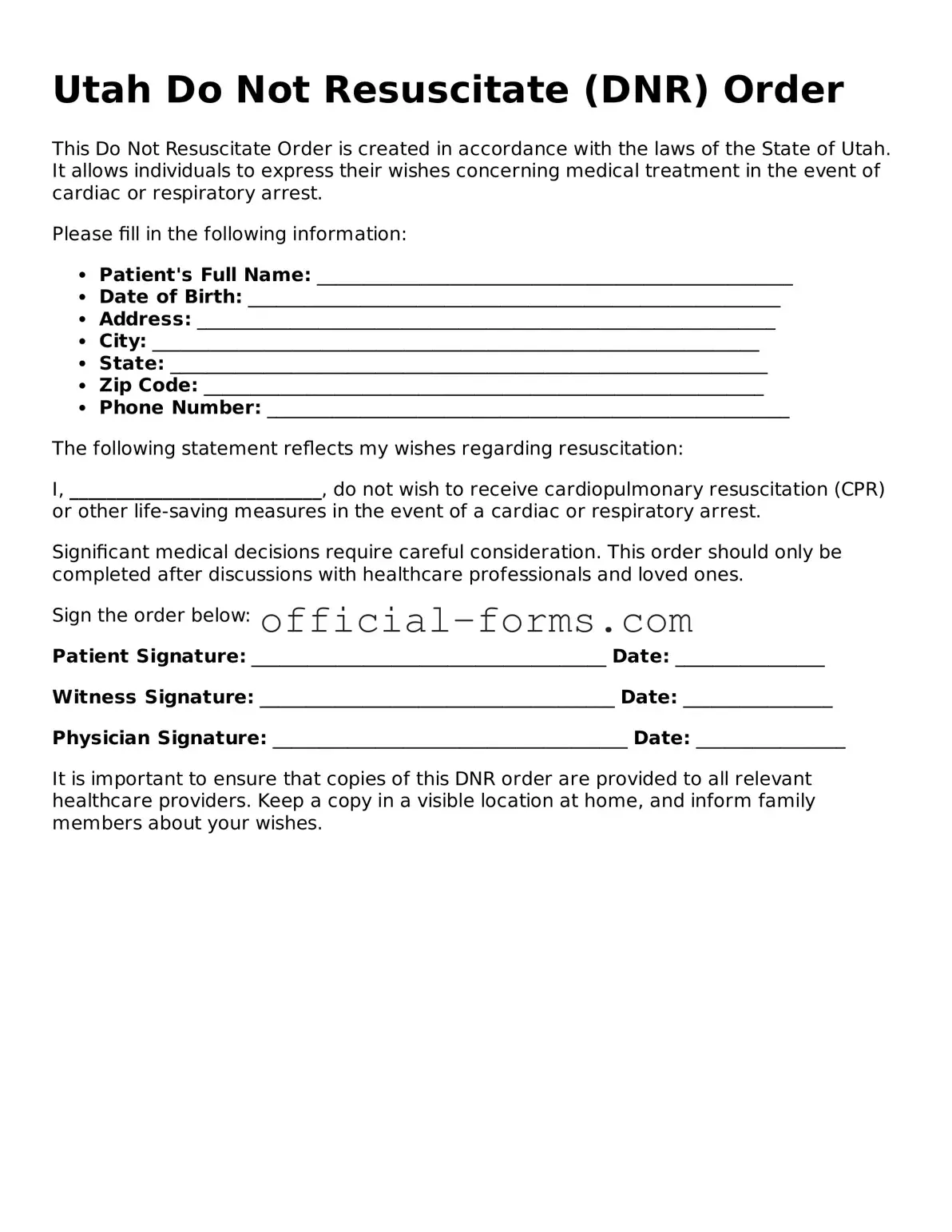Filling out the Utah Do Not Resuscitate Order form is a significant step in ensuring that your healthcare preferences are respected. However, many individuals make common mistakes that can lead to confusion or complications. Awareness of these pitfalls can help you avoid them and ensure that your wishes are clearly communicated.
One frequent error occurs when individuals fail to provide sufficient identification. It is crucial to include your full name, date of birth, and any other required personal information. Omitting this information can result in delays or even the invalidation of your order. Always double-check that your identification details are complete and accurate.
Another mistake is neglecting to sign and date the form. This step is essential, as it verifies that the order reflects your current wishes. Without a signature and date, healthcare providers may question the validity of the document. Make sure to sign the form in the designated area and include the date to avoid any potential issues.
Some individuals also overlook the importance of discussing their wishes with family members and healthcare providers. Communication is key. Sharing your decisions ensures that your loved ones understand your preferences and can advocate for you if necessary. This conversation can also help prevent misunderstandings or disputes in the future.
Additionally, people sometimes use outdated versions of the form. It is vital to obtain the most current version of the Utah Do Not Resuscitate Order form. Using an outdated form may lead to complications in its acceptance by healthcare facilities. Always verify that you are using the latest version available.
Lastly, failing to review the completed form thoroughly can lead to errors that may impact your care. Take the time to read through the entire document before submitting it. Ensure that all information is accurate and that you have followed all instructions. A careful review can prevent mistakes that might otherwise hinder the implementation of your wishes.
